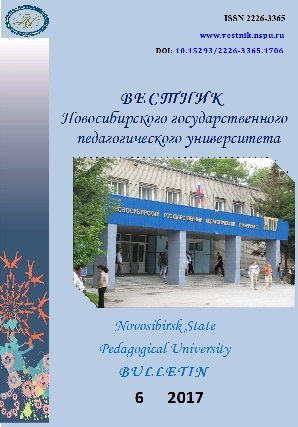Интеграция науки, образования, бизнеса в формате научно-практического обучения школьников
Integration of science, education, business within the framework of scientific-practical learning of schoolchildren
Author(s): Lyudmila Evgenjevna OsipenkoSubject(s): School education, Higher Education , Sociology of Education
Published by: Новосибирский государственный педагогический университет
Keywords: Science; Education; Technology park; Integration; Scientific-practical learning; Human capital; Giftedness; Knowledge; Competence; Innovation
Summary/Abstract: Introduction. The article presents an analysis of recent research investigations emphasizing the need for a systematic approach to the integration of learning, science and business within a single educational phenomenon – the scientific-practical learning of schoolchildren. The purpose of the research is to justify the structure of the model of schoolchildren’s scientific-practical learning as a prototype of a technology park and to prove the advantages of scientific-practical learning in comparison with the traditional formats of school education. Materials and Methods. The research methodology includes theoretical analysis of foreign and domestic scientific literature, analysis of different systems on the basis of the isomorphism principle, modeling, questionnaire survey, generalization and interpretation of empirical data using of the methods of mathematical statistics. Results. The literature analysis enables the author to conclude that synergy of education with science, production and business, united in a single phenomenon of the scientific-practical learning of schoolchildren, is an effective direction of its development. The idea of didactic adaptation and extrapolation of the methodology of the technology park to educational issues is logically justified and embodied in the model of the scientific-practical learning of schoolchildren. The main components of the model are identified. Its structure is determined by the following ones: fundamental training and research and project activities. It is proved that the complex of these components within the structure of the scientific-practical learning of schoolchildren ensures the formation of the basic scientific and project competence, as well as, information mathematical, social and communicative ones. The advantages of the scientific-practical learning are mathematically grounded in comparison with traditional formats of school education. Conclusions. The basic structural components of the model of schoolchildren’s scientific-practical learning are generalized. The author identified the prospects of its development as a matrix element of the ecosystem: school – university – business.
Journal: Вестник Новосибирского государственного педагогического университета
- Issue Year: 7/2017
- Issue No: 6
- Page Range: 212-231
- Page Count: 20
- Language: Russian

